: Contemporary American Sculpture
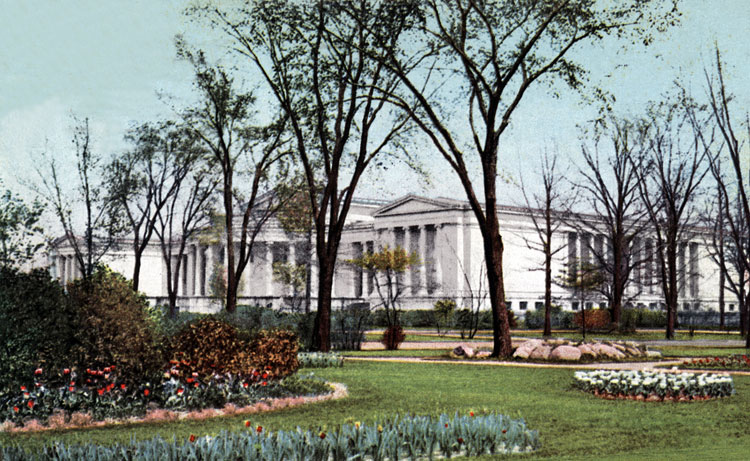
Spring at the Albright Art Gallery, c. 1910. Image source: private collection
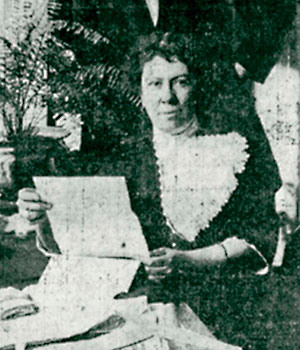
Cornelia Bentley Sage, date unknown. Image source: Albright-Knox Art Gallery
Cornelia B. Sage, Art Director of the Albright Art Gallery in 1916, oversaw one of the biggest and most popular of all exhibitions at the young gallery. Buffalo-born, she had begun with the gallery in 1905 at its opening, as assistant to director Charles Kurtz. In 1910, she became the first female director of a major art museum in the U.S.; she was in her mid-30s. Early achievements included one-man exhibits for which she utilized her many personal friendships with American and French artists.
But in 1916, from June to October, Sage and Herbert Adams, president of the National Sculpture Society, presented the "Exhibit of Contemporary American Sculpture." It featured 800 works of sculpture representing 168 American sculptors, almost entirely of living artists. This was a dramatic departure from national exhibits that were one-man shows or exhibits honoring past sculptors. It was modern art of the "plastic" type. All categories of sculpture were represented, and a number of women sculptors had multiple works on display. Many items were for sale. Some items were plaster versions, direct from the Panama-Pacific International Exposition in San Francisco which ended in December 1915. At least three Buffalo sculptors were represented: Grace Rumsey Goodyear, Anna Glenny, and Charles Rumsey Cary.
The public response was enthusiastic; previous attendance records were doubled. The first Sunday after the opening saw 8,625 visitors and attendance increased to over 11,000 on Sundays.
American sculpture, Sage said, was being reborn in the new century, with "The bursting of old bonds, the seeking for new channels of expression, the impatience with conservatism in many forms..." The young Albright Art Gallery, with less than 300 paintings in its collection, boldly emptied its walls and gained a national recognition as a gallery of modern art in the summer of 1916.
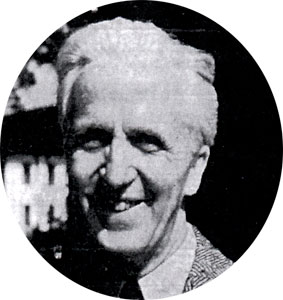 Bryant Fleming in later years |
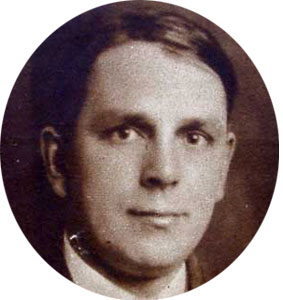 Harold Olmsted c. 1920 |
Many of the 800 sculptures were designed to be displayed outdoors; this was happily accommodated by the Gallery's location in Delaware Park. Forty of the larger works and fountain pieces were exhibited around the Gallery amid its landscape. And the landscape, both within and without the Gallery, was improved by the efforts of two Buffalo landscape architects, Bryant Fleming and Harold Olmsted. In the photos and slideshow below, their work to introduce shrubs, plants, and temporary fountain basins and pools is apparent. The color and texture of their landscape surely enhanced both the cast and plaster objects of the exhibit.
Images below, unless noted, are take from " Art & Archaeology," (September 1916) and "Gallery Notes," Albright periodical (July 1916)

"Figures for Garden Pool" by Charles Rumsey Cary
The above fountain, installed in a temporary pool outside the Gallery, was borrowed from Mrs. E.H. Harriman, mother-in-law to Buffalo native Charles Rumsey Cary. If it looks familair, one can see a copy installed in the Mirror Lake at Forest Lawn Cemetery. The cemetery's bronze copy was cast in 1987 and is titled, "The Three Graces." Here is a photo.

"Door for the Gates Mausoleum" by Robert Aitken. The bronze relief was created for John W. Gates, who made his fortune in several enterprises, including barbed wire. The door can be seen in the Woodlawn Cemetery in the Bronx, New York.
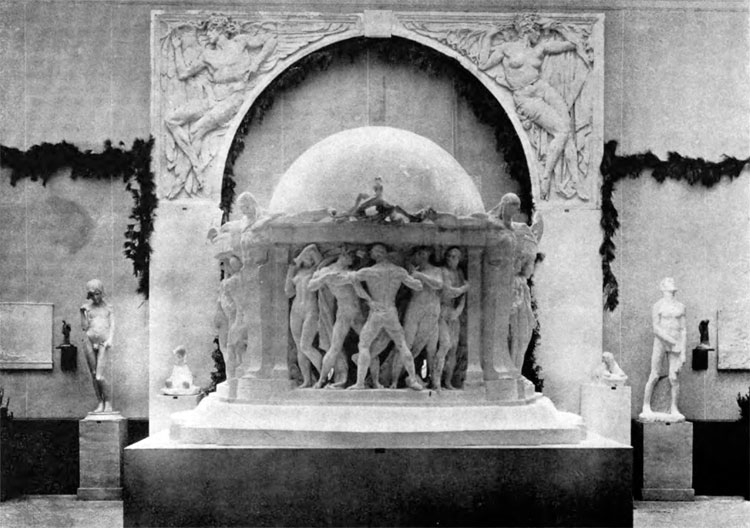
Robert Aitken's "Fountain of the Earth" was awarded the gold medal by the Architectural League of New York in 1915. An allegorical statue depicting the evolution of man, the plaster portion exhibited was only the centerpiece of the 150-foot sculpture. Look here to see it as fair-goers saw it at the 1915 Panama-Pacific International Exposition. It was not cast and presumably the plaster version is lost.
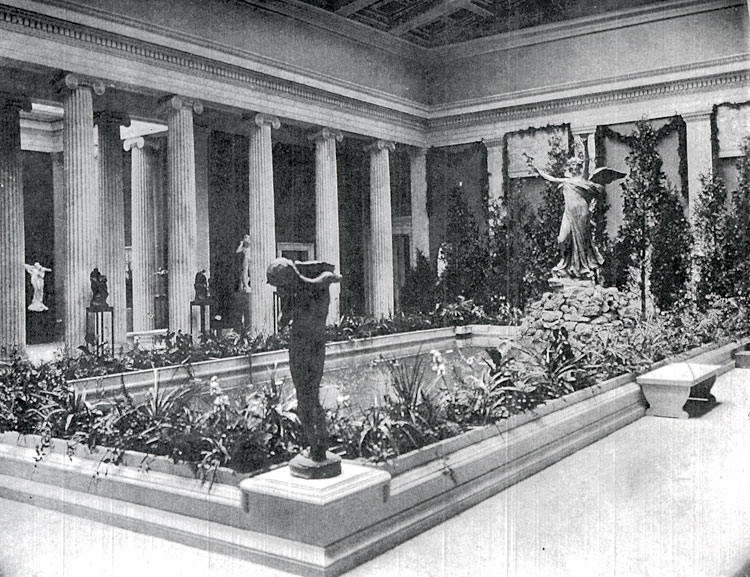
Cornelia B. Sage said, "The place of honor in the exhibition has been awarded to the Spirit of Life from the Spencer Trask Memorial, Saratoga Springs, N.Y. by the dean of American sculptors, Daniel Chester French." To that end, the sculpture court of the Albright Gallery was transformed into a garden setting with temporary watered pool.
